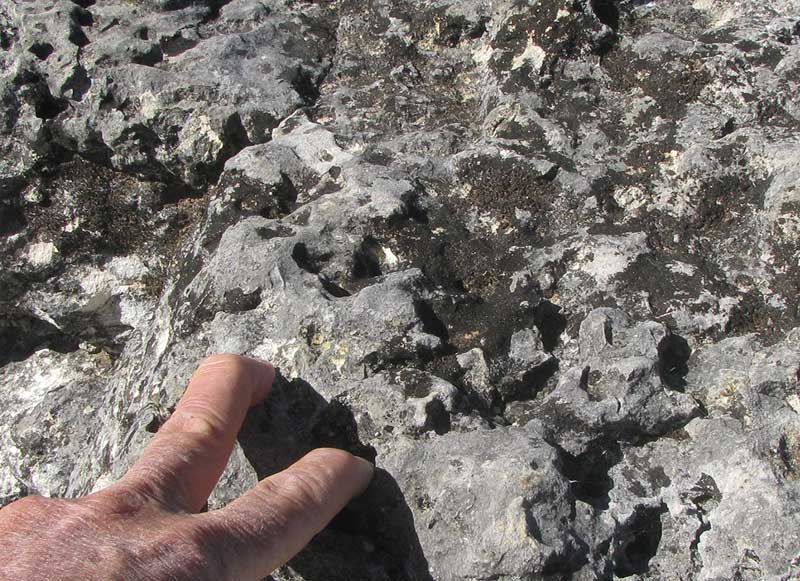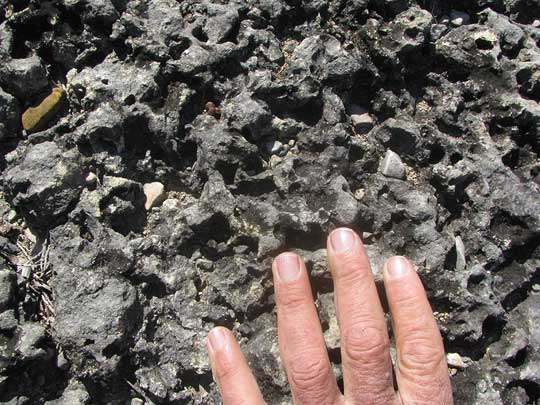Excerpts from Jim Conrad's
Naturalist Newsletter

from the February 24, 2013 Newsletter issued from the valley of the Dry Frio River in northern Uvalde County, southwestern Texas, on the southern border of the Edwards Plateau; elevation ~1750m (~5750 ft); N29.62°, W99.86°; USA
BLACK PIT LICHEN
Along the little Dry Frio River running behind the cabin, here and there horizontal beds of limestone outcrop. Sometimes the limestone's surface is smooth and flat but other times it's very roughly pitted. That's because different geological formations are involved, and each formation reacts differently to physical and chemical erosion. Often in small cavities of pitted limestone a certain black, crustose lichen can be found, as shown above. An even more roughly pitted surface with pits lined with black lichen is shown below:

Anatomically, there's not much to this lichen. Spore-producing, bowl-like apothecia such as those seen on all the lichens we've looked at so far are missing in this species. Its spores are produced in microscopic cavities called perithecia, which are mostly to entirely sunken into the lichen's body, or thallus. Up close you see that the lichen surface fragments into irregular little islands, and that the thallus constituting each island's surface is very warty, as shown below:

Beneath the dissecting scope there's still not much to see, other than that the "warts" sometimes sprout rootlike appendages that snake out onto the naked limestone, as seen below:

Using the "Dynamic Key" at http://lichenportal.org to make a list of species it might possibly be, then on the Internet comparing our pictures with other pictures of each species, my best bet is that our black, limestone-loving, pit-living lichen is VERRUCARIA NIGRESCENS, which doesn't seem to have a common English name. However, I've seen the name Black Pit Lichen applied to certain Verrucaria species, and that name seems so appropriate for this species that that's the English name I'll begin using. Fact is, the genus Verrucaria contains numerous species, they're very hard to distinguish, and even lichenologists are uncertain how to classify the species, so Verrucaria nigrescens is just an educated guess.
Verrucaria nigrescens is described as living on limestone, walls and mortar, and occasionally on siliceous rocks (like sandstone) in western Eurasia, China, North Africa, North America, and Australia.
Verrucaria species in general help break down limestone rocks by secreting acids that dissolve cement holding together the rock particles. This produces an environment -- the pits -- in which mosses and higher plants eventually take root. This process is slow. A study in Estonia found that it took about 34 years for an average colony of Verrucaria nigrescens to grow 35mm (1-3/8ths inch). I would guess that to form pits such as those in our pictures, centuries if not millennia are required.